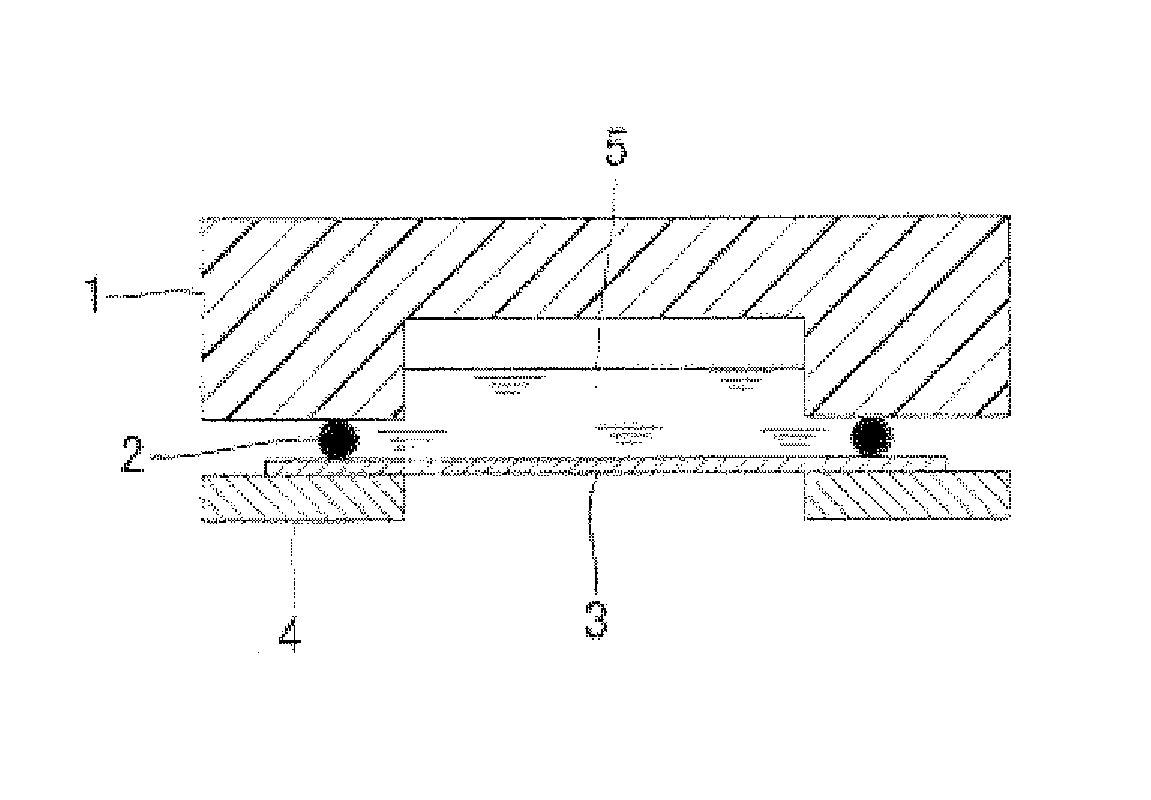Multilayer conductive film, current collector using same, battery and bipolar battery
a technology of conductive film and current collector, which is applied in the direction of cell components, final product manufacturing, sustainable manufacturing/processing, etc., can solve the problems of battery power reduction, degrade and the disadvantageous effect of the connection member on the space and weight of the battery, so as to improve the output density and improve the performance of the battery. , the effect of improving the output density
- Summary
- Abstract
- Description
- Claims
- Application Information
AI Technical Summary
Benefits of technology
Problems solved by technology
Method used
Image
Examples
synthesis example 1
[0215]Pyromellitic dianhydride (PMDA) as a tetracarboxylic dianhydride and 4,4′-oxydianiline (ODA) as a diamine were used as starting materials, and N,N-dimethylformamide (DMF) was used as a solvent.
[0216]Into a glass flask having a volume of 2,000 ml, 681 g of DMF and 90.46 g of ODA were charged and the mixture was stirred to dissolve ODA. Then, 96.57 g of PMDA was added and the mixture was further stirred to thus prepare a reaction solution. Separately, a slurry containing 30 g of DMF and 1.97 g of PMDA was prepared. The slurry was added to the reaction solution while the viscosity was carefully observed. The addition and stirring were stopped when the viscosity reached 200 Pa•s, yielding a polyamic acid solution having a resin solid content concentration of 21% by weight.
[0217]Into a zirconia container, 46.8 g of the obtained polyamic acid solution, 6.55 g of Ketjenblack (EC600JD, manufactured by Lion. Corporation), 197 g of DMF, and 500 g of zirconia balls having a diameter of 5...
synthesis example 2
[0220]As starting materials, 3,3′,4,4′-biphenyltetracarboxylic dianhydride (BPDA) as a tetracarboxylic dianhydride and 4,4′-oxydianiline (ODA) as a diamine were used, and N,N-dimethylacetamide (DMAc) was used as a solvent.
[0221]Into a glass flask having a volume of 2,000 ml, 735 g of DMAc and 54.66 g of ODA were charged and the mixture was stirred to dissolve ODA. Then, 78.73 g of BPDA was added and the mixture was further stirred. Separately, a slurry containing 30 g of DMAc and 1.61 g of BPDA was prepared. The slurry was added to the reaction solution while the viscosity was carefully observed. The addition and stirring were stopped when the viscosity reached 200 Pa•s, yielding a polyamic acid solution having a resin solid content concentration of 15% by weight.
[0222]Into a zirconia container, 80.6 g of the obtained polyamic acid solution, 8.06 g of Ketjenblack (EC600JD, manufactured by Lion Corporation), 161 g of DMF, and 500 g of zirconia balls having a diameter of 5 mm were cha...
synthesis example 3
[0225]Into a zirconia container, 44 g of cycloolefin polymer (trade name: ZEONOR 1410R, manufactured by ZEON Corporation), 6.6 g of Ketjenblack (trade name: EC600JD, manufactured by Lion. Corporation), 176 g of ethylcyclohexane, and 450 g of zirconia balls having a diameter of 5 mm were added and the mixture was subjected to ball mill dispersion to yield a conductive material (dispersion liquid). The dispersion condition was at a rotation speed of 500 rpm for 45 minutes.
[0226]The conductive material was cast with a coating apparatus (Comma Coater; registered trademark, manufactured by Hirano Tecseed Co., Ltd.) on an aluminum foil so as to give a final thickness of 15 μm and the film was dried at 80° C. for 5 minutes and was subsequently heated at 230° C. for 10 minutes. Then, the aluminum foil was removed, thereby yielding a single layer film (15 μm thick) as the layer 1.
PUM
| Property | Measurement | Unit |
|---|---|---|
| weight ratio | aaaaa | aaaaa |
| aspect ratio | aaaaa | aaaaa |
| weight ratio | aaaaa | aaaaa |
Abstract
Description
Claims
Application Information
 Login to View More
Login to View More - R&D
- Intellectual Property
- Life Sciences
- Materials
- Tech Scout
- Unparalleled Data Quality
- Higher Quality Content
- 60% Fewer Hallucinations
Browse by: Latest US Patents, China's latest patents, Technical Efficacy Thesaurus, Application Domain, Technology Topic, Popular Technical Reports.
© 2025 PatSnap. All rights reserved.Legal|Privacy policy|Modern Slavery Act Transparency Statement|Sitemap|About US| Contact US: help@patsnap.com


